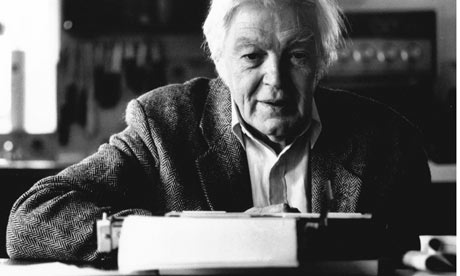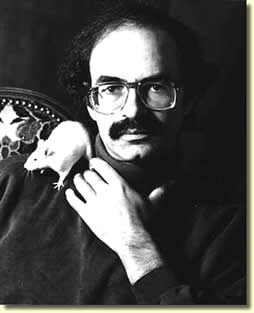 Christopher Wakling’s new novel, What I Did, is a brilliant, dark and often excruciatingly funny journey into a family nightmare. Narrated by a six-year-old boy obsessed with the animal kingdom, it has been the recipient of scintillating reviews, was nominated for the Booker Prize and is fast becoming a book club favourite. I talked to the author – who is also a respected teacher of creative writing – about what it takes to write through a child’s eyes, and what can happen to you when you do. Continue reading
Christopher Wakling’s new novel, What I Did, is a brilliant, dark and often excruciatingly funny journey into a family nightmare. Narrated by a six-year-old boy obsessed with the animal kingdom, it has been the recipient of scintillating reviews, was nominated for the Booker Prize and is fast becoming a book club favourite. I talked to the author – who is also a respected teacher of creative writing – about what it takes to write through a child’s eyes, and what can happen to you when you do. Continue reading
Category: reviews
Dissecting the empathic brain: An interview with Christian Keysers
 Why do we shudder when we watch a tarantula crawling across James Bond’s chest in a 007 movie? And what can looking into a monkey’s brain tell us about our capacity to share in the emotional experiences of other people? Answers to these questions appear in The Empathic Brain: How the Discovery of Mirror Neurons Changes our Understanding of Human Nature, the fascinating and entertaining new book by Christian Keysers, Professor for the Social Brain at the University Groningen in the Netherlands. Keysers, one of the world’s most distinguished and innovative neuroscientists, was part of the famous team at the University of Parma, Italy, that discovered auditory mirror neurons in the macaque monkey, which has revolutionised thinking about how empathy works in human beings. In this exclusive interview for Outrospection, I talk to him about his book, and how far neuroscience has really taken us in our understanding of empathy. Continue reading
Why do we shudder when we watch a tarantula crawling across James Bond’s chest in a 007 movie? And what can looking into a monkey’s brain tell us about our capacity to share in the emotional experiences of other people? Answers to these questions appear in The Empathic Brain: How the Discovery of Mirror Neurons Changes our Understanding of Human Nature, the fascinating and entertaining new book by Christian Keysers, Professor for the Social Brain at the University Groningen in the Netherlands. Keysers, one of the world’s most distinguished and innovative neuroscientists, was part of the famous team at the University of Parma, Italy, that discovered auditory mirror neurons in the macaque monkey, which has revolutionised thinking about how empathy works in human beings. In this exclusive interview for Outrospection, I talk to him about his book, and how far neuroscience has really taken us in our understanding of empathy. Continue reading
Time to get off the analyst's couch?
The history of outrospection is yet to be written. But when it is, you can bet the name of Peter Singer will be there. Singer is one of the world’s most influential moral philosophers, best known for his 1975 book Animal Liberation, which has become a foundational text of the animal liberation movement. But in the 1990s he also wrote another prescient book, How Are We To Live: Ethics in an Age of Self-Interest, which contains the kernels of an outrospective approach to thinking about the world. Continue reading
Colin Ward – an obituary and appreciation of the chuckling anarchist

Colin Ward was one the greatest anarchist thinkers of the past half century and a pioneering social historian. He died earlier this month at the age of eighty-five, leaving a legacy of over thirty books and a huge following of activists, educators and writers – amongst them myself – who were inspired by his approach to radical social change, which always favoured practical, grass-roots action over utopian dreamings of revolution. The outpouring of obituaries in The Guardian and elsewhere are testimony to his influence. Continue reading
Watch an empathy film this Christmas
Perhaps you are looking forward to falling asleep in front of a mediocre DVD on Christmas Day as you digest an oversized lunch. But if you care for a more stimulating afternoon, I can recommend treating yourself to an empathy film instead. So, what are the options?
A fascinating genre that can expand our empathetic imaginations is war movies depicting the perspective of enemies. Recent examples include a pair of films directed by Clint Eastwood in 2006 about the Battle for Iwo Jima in the Second World War, one from the viewpoint of US soldiers (Flags of Our Fathers), and the other seen through the eyes of Japanese soldiers (Letters from Iwo Jima), which is entirely in Japanese. The inverted lens challenges simplistic notions of nationalism, patriotism and triumphalism, and makes war seem far from glorious while at the same time breaking down the barriers between ‘us’ and ‘them’. Continue reading
Review: The Sacred Made Real at the National Gallery
For over half a millennia Christian art has attempted to use empathy to help people understand the reality and significance of Christ’s suffering on the cross. We are offered paintings and sculptures showing nails piercing flesh, gaping wounds and seeping blood that aim to have us not only see what Christ endured, but also to physically feel his bodily pain. As the art historian Jill Bennett points out in her book Empathic Vision: Affect, Trauma and Contemporary Art:
‘The images developed from the late medieval period with the express function of inspiring devotion were not simply the “Bible of the unlettered” in the sense of translating words into images. Rather, they conveyed the essence of Christ’s sacrifice, the meaning of suffering, by promoting and facilitating an empathetic imitation of Christ.’
Continue reading
